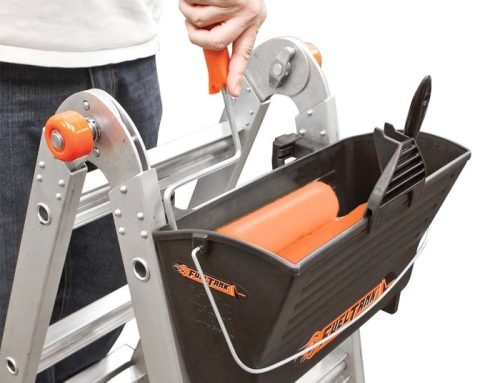February’s
storms saw wind speeds of up to 100mph in some areas, and for many people it
was the worst storm since 1987. The Met
Office even issued a rare Red warning due to the extreme winds, and we all saw
those videos of people being literally blown off their feet. Several train services were suspended and
people were advised not to travel except in emergencies due to the danger of
falling trees and flying debris. We hope
that no-one thought they’d attempt to climb a ladder in these conditions, but
you may be surprised to know that there isn’t a legally set wind speed cap for
safe working conditions.
Rather than a
legal limit there is an advised wind speed limit of 23-25mph, which is between
5 and 6 on the Beaufort scale. We all
remember that from school, but if you need a refresher, this is the wind speed
which makes umbrellas hard to use and which causes small trees to sway. The activity you are carrying out makes a
difference to the maximum advisable wind speed, so laying tiles or roofing
slates shouldn’t be carried out if the wind is stronger than 23mph, while
handling and laying roofing felt shouldn’t be attempted at wind speeds over
17mph. This is due to the large surface
area of the material and the danger it poses in acting as a sail in high winds.
It’s not just
the act of climbing a ladder and working with certain materials that poses a
risk in high winds, but also the safe transport and storage of ladders and
other building materials. High winds can
knock piles of slates or bricks off scaffolding, which did happen during storms
Eunice and Franklin. Strong gusts can
also dislodge ladders, if they’re left on scaffolding – a road in Sussex was
closed briefly after a ladder was blown from scaffolding. Strong gusts also pose a real danger when carrying
and positioning ladders. We’ve all heard
the horror stories of people being electrocuted when a ladder they were
carrying touched overhead power lines, and high winds create the perfect
conditions for accidents like this.
In moderate
winds (13 – 18 mph) and conditions approaching strong winds, it is advisable to
take extra precautions. Ladders should
be tied to the working structure (if they are not already) and be moved or
handled by more than one person to account for instability. Safety goggles should be worn to stop small
debris and dust flying into the eyes, while gloves help protect the hands
against the effects of wind chill, reducing the possibility of inferior
grip. Hard hats should be secured with
the safety strap (of course, this should be done at all times but in reality,
there will always be a few that try to cut corners) so they don’t blow off, and
on-the-spot risk assessments should be done if weather conditions change.
Extreme
weather events like the February storms are happening more frequently, so it is
vital that ladder users are aware of the weather conditions that make working
at height unsafe. In the incredibly
strong winds we saw during storms Eunice and Franklin, even working on the
ground on a construction site would have been dangerous, due to the risk of
materials flying around the site – imagine trying to carry sheets of
plasterboard in winds that knock people off their feet.
Although
there’s no maximum legal limit for wind speeds it is advisable that when winds
reach 20mph that some activities are ceased, especially those that involve
moving and handling materials. A company
or personal policy (for sole traders) should set out what conditions are
considered unsafe and it is wise to take into account the effect of rain in
high winds, and whether heavy rain poses a similar threat to safety.






Leave A Comment
You must be logged in to post a comment.